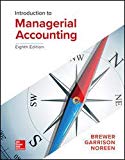
Financial Ratios for Assessing Profitability and Market Performance
Refer to the financial statements and other data in Problem 14-18. Assume Paul Sabin has asked you to assess his company's profitability and stock market performance.
Required:
1. You decide first to assess the company's stock market performance. For both this year and last year, compute:
a. The earnings per share. There has been no change in common stock over the last two years.
b. The dividend yield ratio. The company's stock is currently selling for $40 per share; last year it sold for $36 per share.
c. The dividend payout ratio.
d. The price-earnings ratio. How do investors regard Sabin Electronics as compared to other companies in the industry if the industry norm for the price-earnings ratio is 12? Explain.
e. The book value per share of common stock. Does the difference between market value and book value suggest that the stock is overpriced? Explain.
2. You decide next to assess the company's profitability. Compute the following for both this year and last year:
a. The gross margin percentage.
b. The net profit margin percentage.
c. The return on total assets. (Total assets at the beginning of last year were $2,420,000.)
d. The return on equity. (Stockho1ders ' equity at the beginning of 1ast year was $ 1.420.000.)
e. Is the company's financial leverage positive or negative? Explain.
3. Comment on the company's profit performance and stock market performance over the two-year period.
To compute:
The following ratios for this year and last year −
Answer to Problem 19P
Solution:
| Ratios | This year | Last Year | |
| a | Gross margin | 22.50% | 20.67% |
| b | Net margin percentage | 5.60% | 4.51% |
| c | Return on total assets | 12.10% | 10.10% |
| d | Return on equity | 18.48% | 13.75% |
| e | Financial Leverage | Positive | Positive |
Explanation of Solution
The above answers can be explained as under −
Gross margin percentage = 22.5 %
For last year − Given
- Sales = $ 4,350,000
- Gross margin = $ 900,000
Gross margin percentage = 20.67 %
For last year − Given
- Sales = $ 4,350,000
- Net profit margin = $ 196,000
For last year − Given,
- Net Income = $ 196,000
- Beginning total assets = $ 2,420,000
- Ending total assets = $ 2,460,000
- Interest Expense = $ 72,000
- Tax Rate = 30 %
For last year − Given,
- Net Income = $ 196,000
- Beginning Stockholder’s equity = $ 1,420,000
- Ending stockholder’s equity = $ 1,430,000 Now, average stockholder’s equity −
Thus, all the ratio for requirements 2 have been calculated.
Requirement 3
To comment:
Company’s profit performance and Stock market performance
Answer to Problem 19P
Solution:
The profit ratios showed an increasing trend and earnings per share also increased. The price earnings ratio declined from last year. The return on total assets and return on equity also increased from last year. The price earnings ratio per share decreased from 9.18 to 7.14. But the market price of the share increased from last year.
It can be said that stock price will have potential growth in future years.
Explanation of Solution
The above observations can be explained as, the profitability ratio improved from last year to this year. This signifies that there is an increase in the profit earning efficiency of the company. Further, the other stock ratios like, earnings per share, dividend yield ratio, book value per share also increased, explaining that the stock of the company will have potential growth in the future years.
The dividend pay-out ratio decreased. The reason may be company is planning to pay less as dividend and utilize the retained income for future growth.
Thus, the observations on the profitability and stock performance have been explained.
Want to see more full solutions like this?
Chapter 14 Solutions
GEN COMBO LOOSELEAF INTRODUCTION TO MANAGERIAL ACCOUNTING; CONNECT AC
- helparrow_forwardBansai, age 66, retires and receives a $1,450 per month annuity from his employer's qualified pension plan. Bansai made $87,600 of after-tax contributions to the plan before retirement. Under the simplified method, Bansai's number of anticipated payments is 240. What is the amount includible in income in the first year of withdrawals assuming 12 monthly payments? A. $10,560 B. $12,540 C. $17,400 D. $8,220arrow_forwardWhat is the cost of goods sold?arrow_forward
- Century 21 Accounting Multicolumn JournalAccountingISBN:9781337679503Author:GilbertsonPublisher:Cengage
 Managerial Accounting: The Cornerstone of Busines...AccountingISBN:9781337115773Author:Maryanne M. Mowen, Don R. Hansen, Dan L. HeitgerPublisher:Cengage Learning
Managerial Accounting: The Cornerstone of Busines...AccountingISBN:9781337115773Author:Maryanne M. Mowen, Don R. Hansen, Dan L. HeitgerPublisher:Cengage Learning

